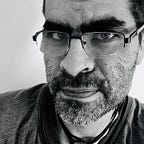Elegy for the Darkroom
A photographer had to be blind in order to see the light
There is no doubt digital photography has come with a lot of advantages. In the beginning, we who used to take film photographs were skeptical, mainly because of our concerns about image resolution.
We knew that sooner or later the technology was going to improve and the resolution of the pixels was going to reach the resolution of the silver crystals.
But it happened faster than we thought. That is the reason why you don’t hear names like Agpha, Ilford, Konica, or even Polaroid or Kodak anymore. The change surprised us while sleeping.
It has been a huge transformation. A very good one.
Before digital photography, the career of photography was too expensive, for example.
I used to be extremely careful before pressing the shutter bottom of my 35 mm camera. The film was far from been cheap. And if the job needed to do photo bursts, you developed the film and printed a contact print before choosing the specific photos you were going to print in big size.
Ok. I’m not going to tell all the stories that could make me look like the older person in the room.
Enough to say that my three-year-old daughter is taking better photos with my smartphone than the ones I took with my professional camera when I began to learn photography. Of course, she has taken too many more photos at her age than the ones I took in my first three years of learning. The camera is far easier to use and there is no extra cost for have the ‘positive’ image on the screen.
Your first 10,000 photographs are your worst.
―Henri Cartier-Bresson
The distress involved in being careful when shooting may have helped to pay more attention to the process. But, the advantages of checking what you take immediately after doing it are enormous.
What I miss is the development process. Today a photographer has to know about software, computers, monitors, printers… but nothing about chemistry.
Why chemistry is important? Chemistry is in some way alchemy. And alchemy is the craft of transformation.
There was a lot of alchemy in the photography processes.
Alchemy transformed an invisible image in film—called by the beautiful name of ‘latent image’—to a visible image on a photographic paper, just for start.
The craft of transformation is gone. And with it, the marvelous darkroom.
The one who worked with light—photographer—had to face the darkness. To master the art of “drawing with light” (from the Greek φωτός (phōtos), “light”, and γραφή (graphé), “drawing) you had to master the darkness.
A photographer had to learn to be blind during the development process, to use touch, smell and hearing. To feel the lack of vision. And to embrace the contradiction of the craft: be blind to see light.
The darkroom was also a place to make a pause.
The camera was essentially a timepiece to capture time with its gears and strings: you had the film speed, the shutter speed, the fast curtain or guillotine.
To capture time, to stop time as photography does, you had to enter a room to slow down the process. You can’t forget the sensation of looking at a paper sunken in magic liquid and see an image slowly appearing on it. Everything under a faint red lightbulb.
Photography was alchemy, darkness, time detention, magic…
I miss that.
